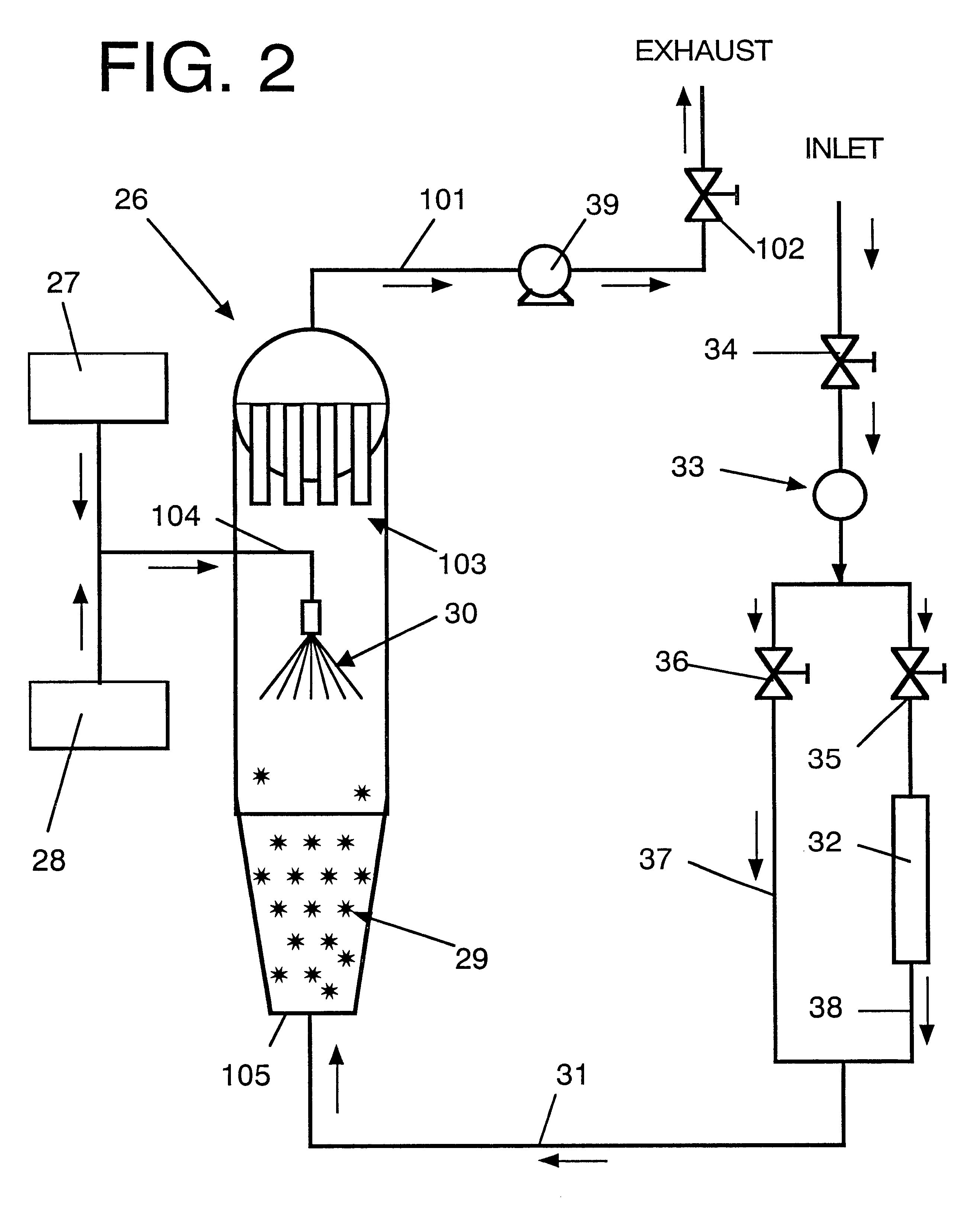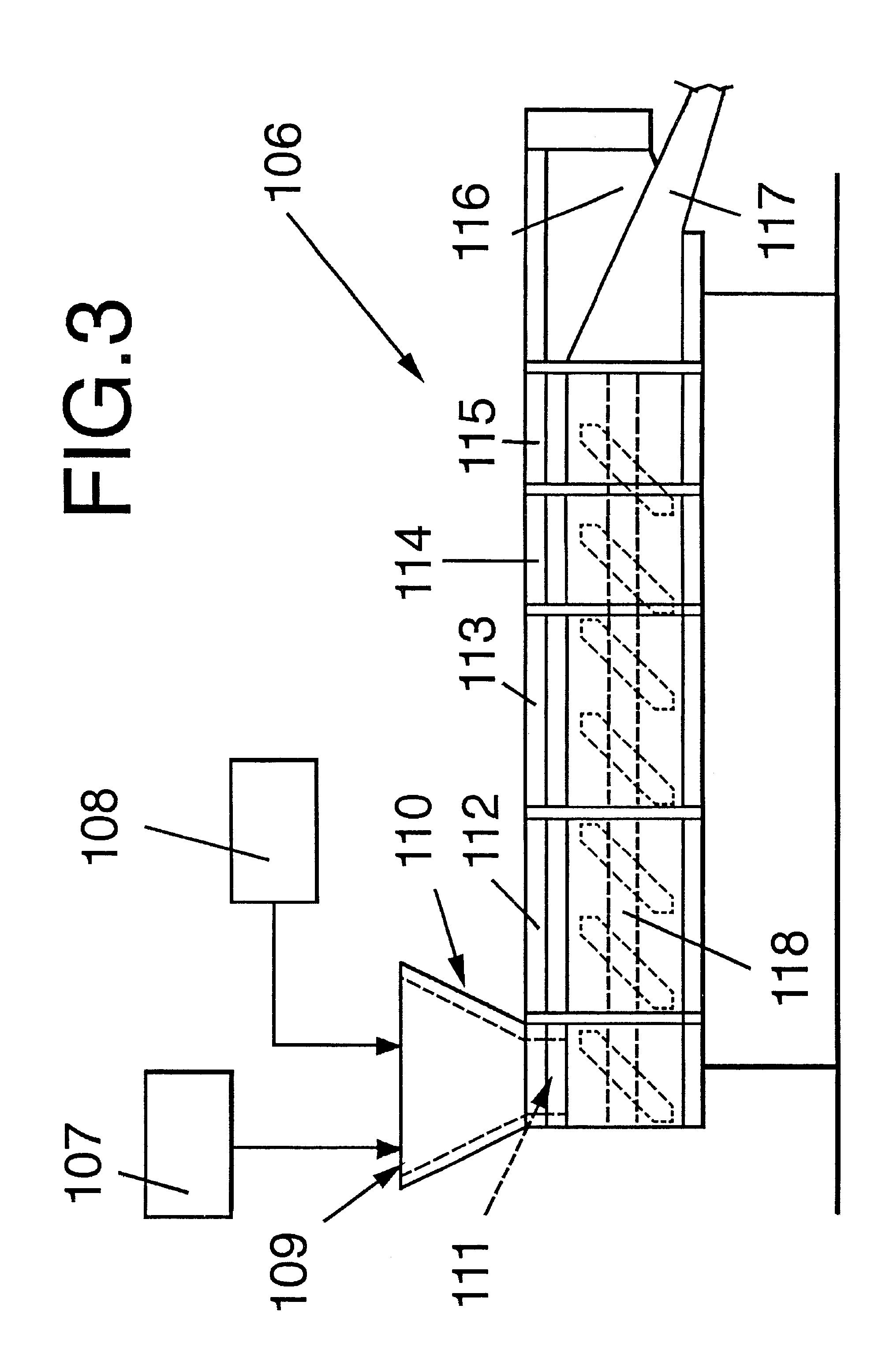Microparticles which controllably release olfactorily active substances, methods of using same and processes for preparing same
a technology of microparticles and olfactory active substances, which is applied in the field of microparticles which, can solve the problems of distortion of the fragrance profile, delay in the release of fragrance from a composition, and ineffective extraction of fragrance from a deodorant stick, so as to achieve the effect of improving the fragrance performan
- Summary
- Abstract
- Description
- Claims
- Application Information
AI Technical Summary
Benefits of technology
Problems solved by technology
Method used
Image
Examples
example ii preparation
OF A DEODORANT STICK
In accordance with the process shown in FIG. 1 the fragrance of Example I, supra, is plated onto hydrophobic silica (SIPERNAT.RTM. D-17 manufactured by the Degussa Chemical Corporation) according to the diagram as set forth in FIG. 2, described in detail, supra. The maltose:mannitol blend melt is then combined with the fragrance-plated silica and placed into a Werner & Phleiderer twin screw extruder as described in the detailed description of FIG. 3, supra.
The Wemer & Phleiderer extruder is then operated at a feed rate of 18.14 kg per hour with the barrel indicated by reference numeral 111 operated at 96.degree. C.; the barrel indicated by reference numeral 112 operated at 104.degree. C.; the barrel indicated by reference numeral 113 operated at 91.degree. C.; the barrel indicated by reference numeral 114 operated at 75.degree. C.; the barrel indicated by reference numeral 115 operated at 74.degree. C.; and the exit barrel and the exit zone barrel operated at 140...
example iii preparation
OF ANTIPERSPIRANT / DEODORANT
(i) Preparation of Antiperspirant / Deodorant Base
66 Grams of propylene glycol are combined with 27 grams of distilled water 7 Grams of sodium stearate are slowly added with mixing and heated to 80.degree. C. until dissolved. The composition is mixed and poured into ingredient stick molds. The following antiperspirant / deodorant samples are prepared at 1.25 effective fragrance concentration in the antiperspirant / deodorant base;
(ii) Preparation of Antiperspirant / Deodorant with Neat / Encapsulated Fragrance
An encapsulated fragrance was prepared in the same manner as is set forth in Example II, supra. 24.34 Grams of the above antiperspirant / deodorant base is melted on a hotplate. The base is admixed with the encapsulated fragrance mixture. The resulting product is poured into a deodorant stick mold to produce a 25 gram antiperspirant / deodorant stick;
(iii) Preparation of Antiperspirant / Deodorant with Neat Fragrance
A neat fragrance sample is prepared as follows:
24.6...
example iv
TOOTHPASTE COMPOSITION
The following toothpaste composition is prepared:
The components described above were mixed by a blender according to the foregoing formulation to provide a toothpaste. When the product was used as a toothpaste, an excellent, refreshing effect was obtained with the flavor lasting for a period of 3 hours after use.
PUM
| Property | Measurement | Unit |
|---|---|---|
| effective diameter | aaaaa | aaaaa |
| weight percent | aaaaa | aaaaa |
| weight percent | aaaaa | aaaaa |
Abstract
Description
Claims
Application Information
 Login to View More
Login to View More - R&D
- Intellectual Property
- Life Sciences
- Materials
- Tech Scout
- Unparalleled Data Quality
- Higher Quality Content
- 60% Fewer Hallucinations
Browse by: Latest US Patents, China's latest patents, Technical Efficacy Thesaurus, Application Domain, Technology Topic, Popular Technical Reports.
© 2025 PatSnap. All rights reserved.Legal|Privacy policy|Modern Slavery Act Transparency Statement|Sitemap|About US| Contact US: help@patsnap.com



